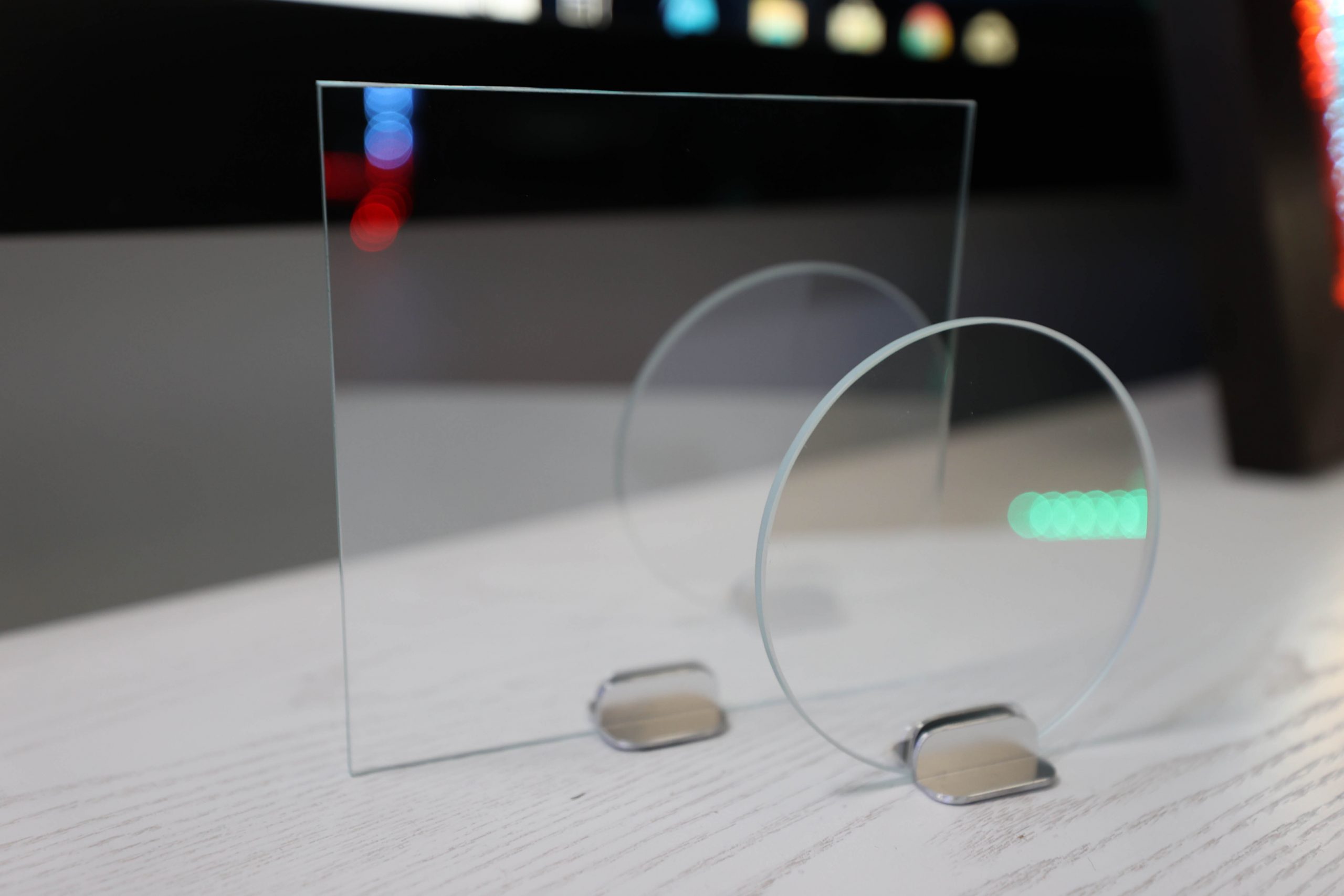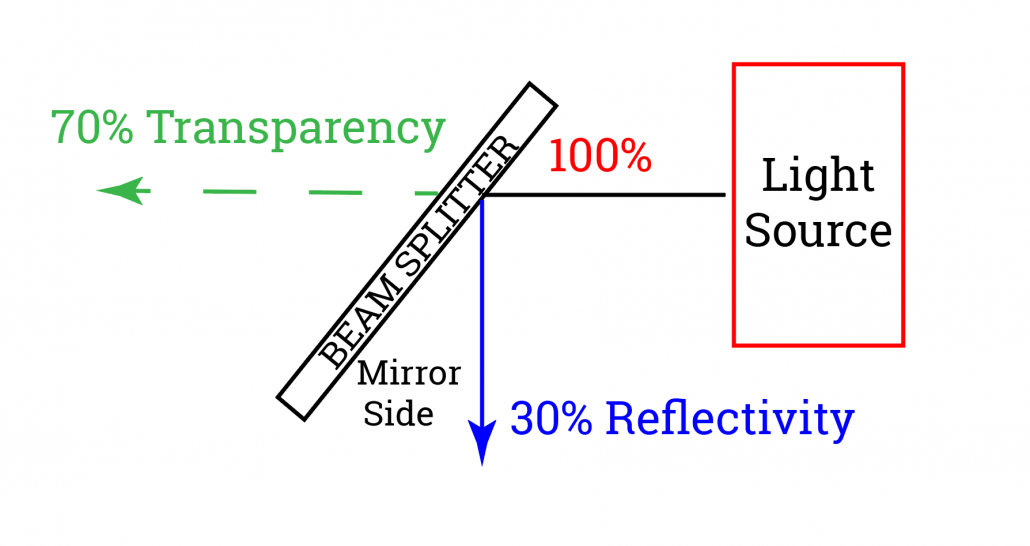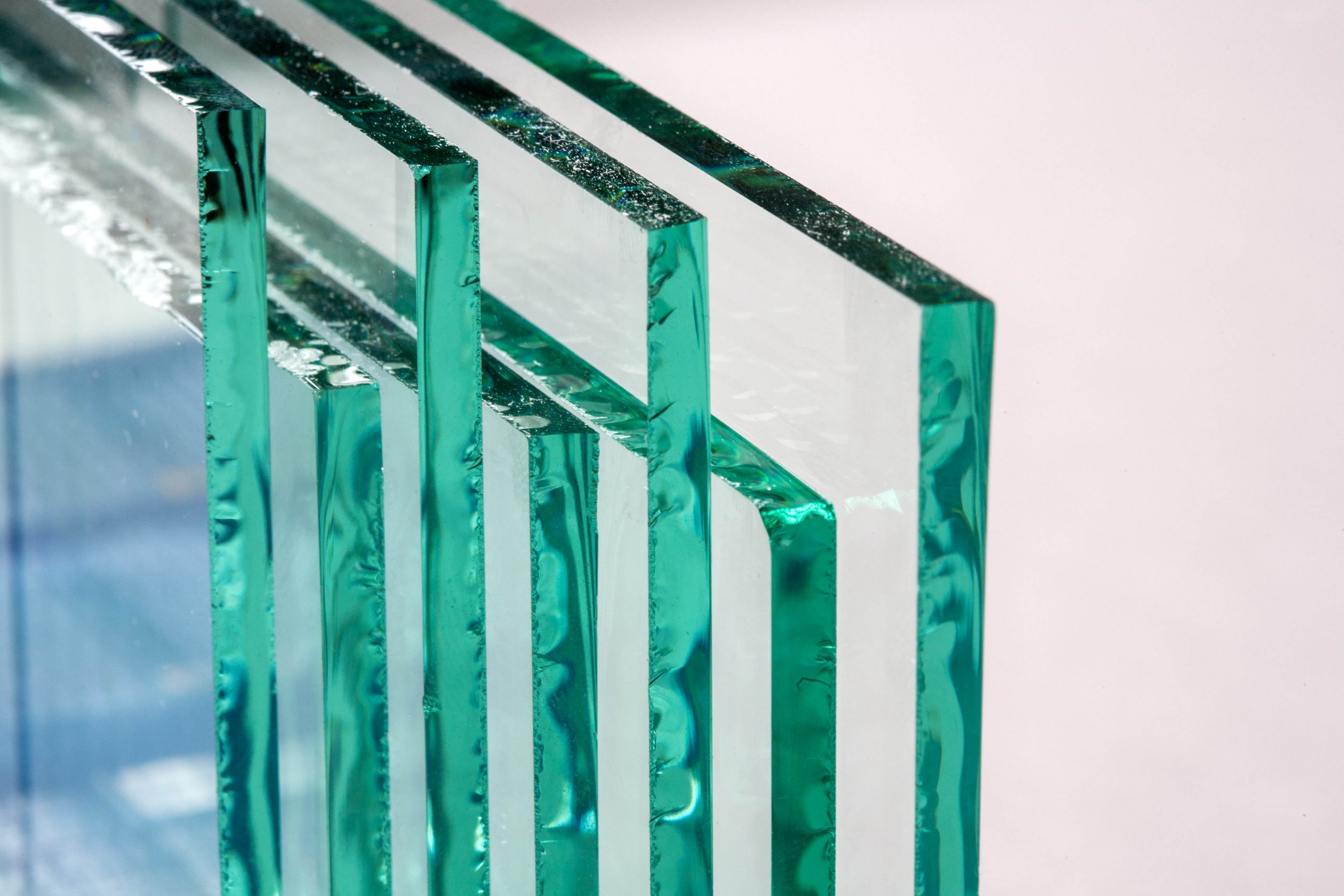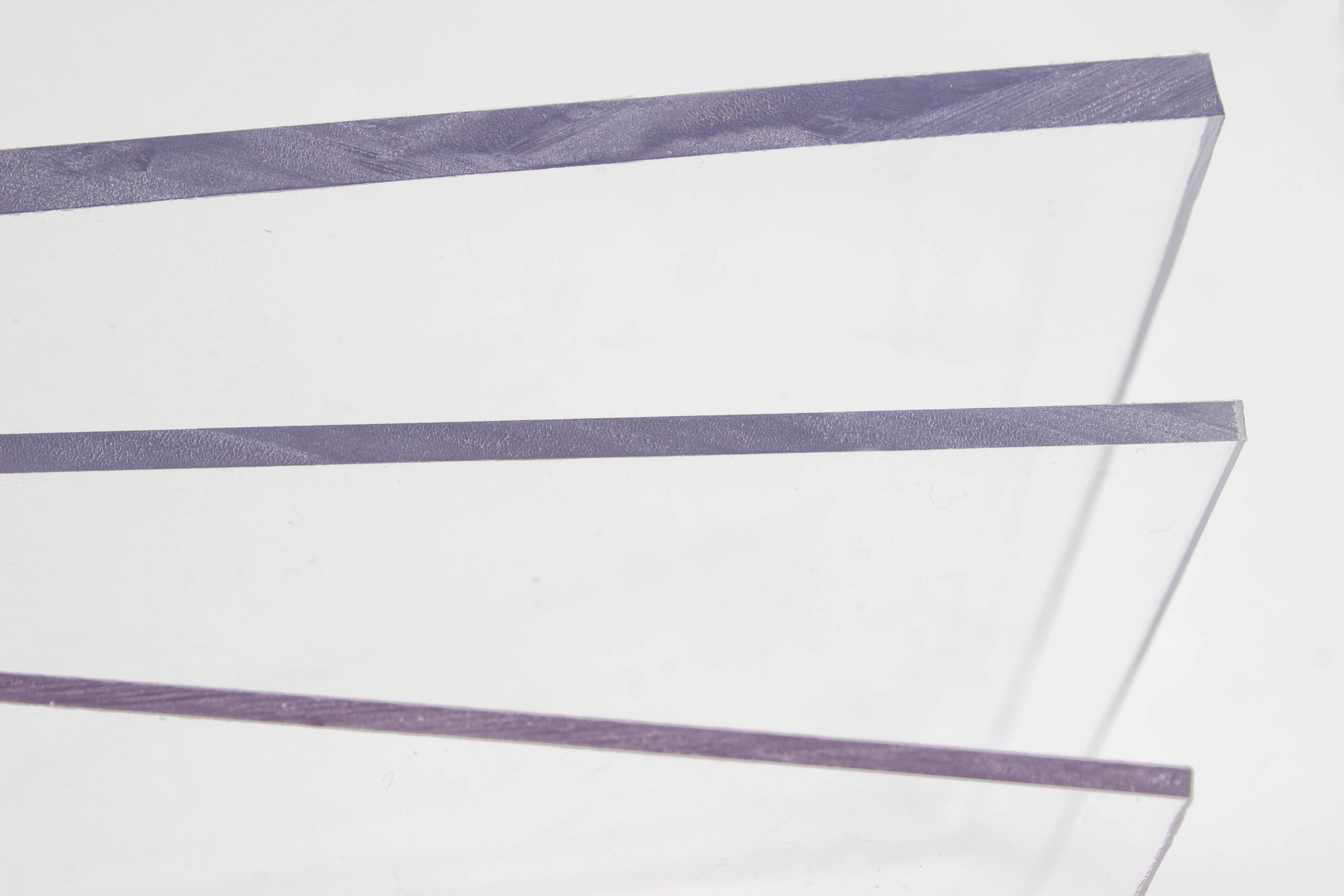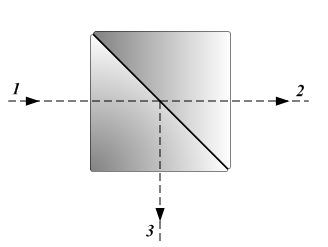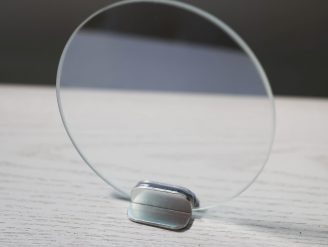Sometimes you need a big, flat beamsplitter mirror. So, what exactly IS a beamsplitter? A beamsplitter, or beam splitter, is a piece of glass with a specialized mirror coating that reflects AND transmits light at the same time. Sometimes it is referred to as a half-silvered mirror.
Either way, it is a simple material that YOU could use right at home for cool DIY projects like teleprompting, mirror TVs and smart mirrors…if you know how.
There are several different ways to distinguish between different types of beamsplitters. The most notable would be polarized vs non polarized, mirror vs dielectric, and cube vs plate. So many options!
Table of Contents
Polarized vs. Non Polarized
So we know that beam splitters split light into two different directions, and the way this is done depends on the polarization.
If your beam splitter is polarized, it will be taking unpolarized lighting and splitting it into two orthogonally polarized beams. This basically means that it’s splitting it into two right angles.
If it is non polarized, the lighting will be split into a specific ratio, but will still maintain the incident light’s original polarization state.
Beam Splitter Coating
Another thing to consider is the coating of your beam splitter. If there is a metallic coating, then some of the light’s power will be lost in the process of reflecting. However, if it has a dielectric coating, the total output power is virtually the same as the total input power.
The beam splitter mirrors we have on our website have a dielectric coating on the face of the glass that reflects 40% of the light. The coating is applied to a low iron glass to minimize the tint, and has an anti-reflective coating on the back to eliminate a double reflection.
When coating is being considered, you also need to consider transparency (T) and reflection (R). Any mirror with a slight transparency could technically be considered a beam splitter. A few of the flat beam splitters that we offer include
- Glass Two Way (70R/11T)
- Home Privacy, Infinity Mirrors, Reality TV
- Acrylic Two Way (70R/30T)
- Interrogation Rooms
- Glass Smart Mirror (70R/30T)
- Smart Mirrors, Workout Mirrors, Hidden Security Cameras
- Dielectric (45R/55T)
- Mirror TVs, Digital Signage and Advertising
- Teleprompter (traditional beamsplitter) (70R/30T or 40R/60T)
- Teleprompting, Special Effects
When choosing the right type of glass, always think about what level of reflectivity and transparency is needed for your project! For example, our two way mirror only has 11% transparency so it probably wouldn’t be a fantastic choice for a teleprompter.
Standard Float Glass vs. Low Iron Glass
You may think that all glass is produced the same–but that’s far from the truth. Glass can be composed of different materials, have different strengthening processes, etc. The type of glass being used can affect a beam splitters abilities, so let’s break it down.
Standard float glass may appear to be “clear”, but it typically has a greenish tint to it. This is because of the natural levels of iron from things like sand that are used to produce the glass. While this green tint won’t affect the beam splitter too much, the glass will only transmit 83% of the light going through it.
Low iron glass still contains small levels of iron, as it is necessary for glass that is going to last. However, with lower iron levels, this glass is more of a blank canvas which makes it a better choice for any type of project where something needs to be viewed in an exact color. Due to the tint free quality of this glass, it transmits up to 91% of light.
Plates vs. Cubes
A cube beam splitter is going to be the quicker setup option. Picture it as two 3 dimensional triangles glued together at their hypotenuse, or longest side, forming a cube.
The outside is covered in an anti-reflective coating, which makes it easy to clean. Then the beam splitter coating will be applied to the hypotenuse of ONE of the triangles before they’re glued together.
This process helps to protect the beam splitter coating from dust, scratches, or other external stresses! The cubic form also makes it easy to mount, as well as keep the beam from being displaced.
With the plate beam splitter, we’ll see that it does the same job but in a totally different way! Plate beam splitters are flat pieces of material, as opposed to the cube.
The plate beam splitter is my preferred splitter for any DIY projects. Being a flat surface, they’re more lightweight AND cheaper, which is always great in my opinion.
Another benefit is that because it’s a single piece, there is no cement layer. The cement layer in the cube has a low threshold for lasers and degradation in UV light.
The plate beam splitter does require a more elaborate mounting system, and it’s reflected wavefront has a little more variation.
Beam Splitter Uses
Teleprompters
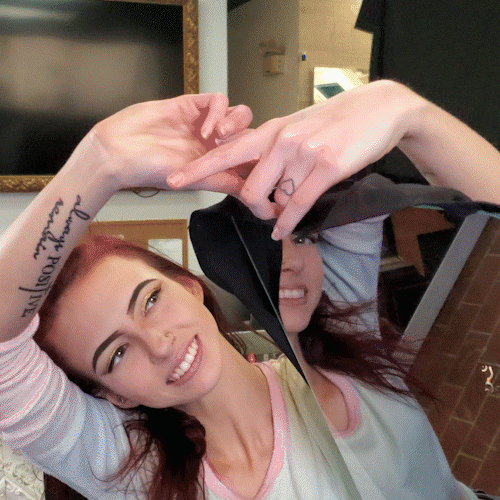
Using a teleprompter to deliver lines is a lifesaver for performers, youtubers, politicians, etc. Having a script to read from, while also being able to record and make eye contact? Wowza, sign me up.
When you’re able to simply read from a script at a pace that you’ve set, it makes it more possible for you to be calm and confident. Rather than focusing on remembering lines, you’re able to be conscious of your tone and body language.
A teleprompters key component is simply a piece of beamsplitter glass. Using a black shroud behind the glass makes it easier to see the text; and of course a phone, tablet, or laptop to display the text on.
Holograms
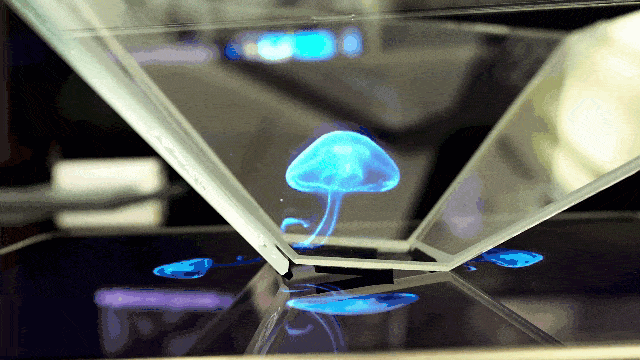
Do you remember seeing Michael Jackson Perform at the 2014 Billboard Music Awards? Well, if you do remember, you’ll know that this performance was done FIVE years after he passed. This, and illusions like it are done with a beam splitter!
The objects beam of light reflects off the beam splitter, and the reference beam goes THROUGH the beam splitter. The objects light going through the beam splitter is where you get your hologram!
The key is to have a black background to really make the image you’re seeing POP in the reflection.
Pepper's Ghost Illusion
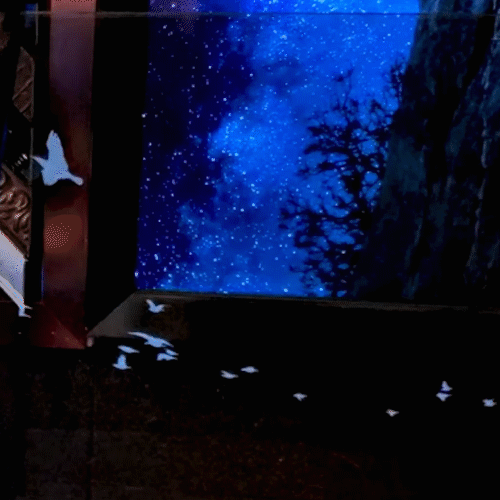
Peppers Ghost is an optical illusion that’s been haunting people since the 1800’s. With this illusion, viewers are seeing a figure appear out of mid air, like a real ghost.
This works by combining some type of projector or screen with a beamsplitter mirror. It is highly important for the glass to be set at an angle. The image of one screen is reflected off of the glass toward the viewer, then the second scene is transmitted through the glass. The lighting is controlled, selectively displaying the image that you’re seeing.
Like the hologram, you’ll want a black background for your image. This ensures that your audience can focus solely on the illusion, and not be distracted by background movement!
There are so many other uses for beam splitters including robotics, science and engineering, and even filmmaking. Whether you’re trying to deliver a smooth speech, or trying to make Tupac perform in your livingroom, a beamsplitter mirror is the way to do it!

